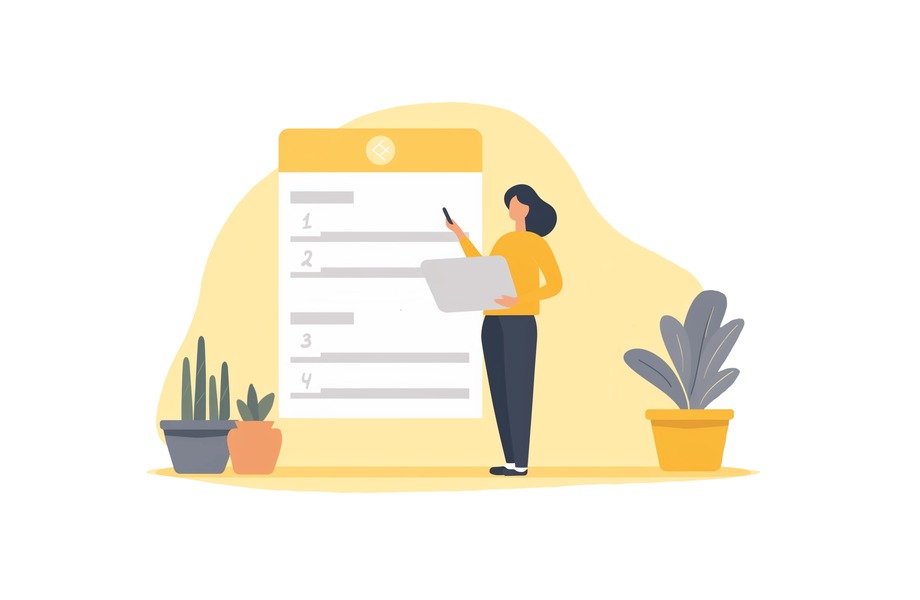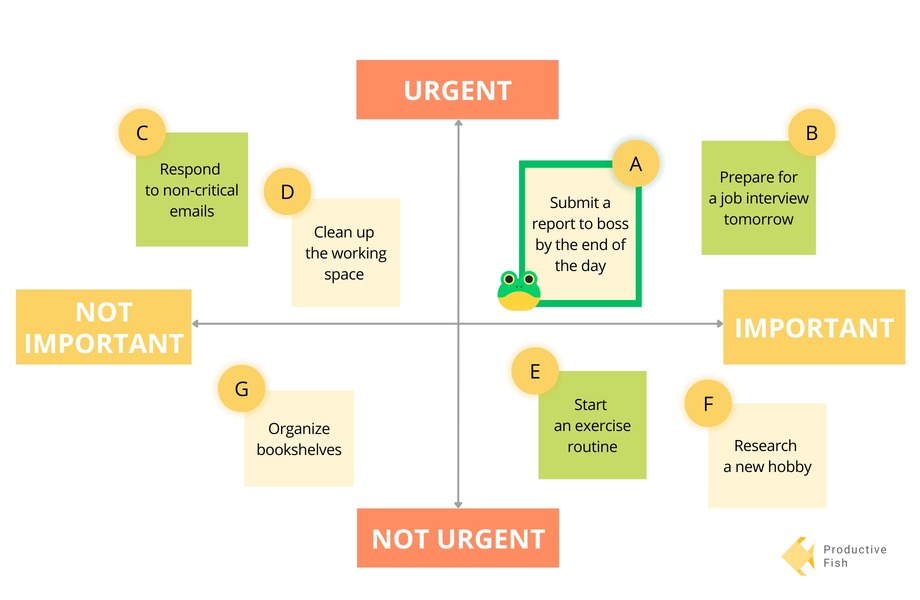Prioritize Tasks and Don’t Miss Anything Important
Updated on 06 Sep 2023 • 6 min read
Do you find yourself overwhelmed with a never-ending list of tasks? Struggling to prioritize what needs to be done and constantly feeling like you're playing catch-up? With multiple urgent requests vying for our attention, it can be challenging to stay focused on what's truly important.

Fortunately, there are effective strategies for task prioritization that can help you manage your workload and increase your productivity.
Whether you're a busy professional, a student, or anyone looking to improve their time management skills, this article is for you. We'll explore what prioritizing means and offer five steps for prioritizing tasks and effective ways on how to prioritize your work.
What is Prioritizing
Prioritizing means determining which tasks are most important and need to be done first. It's like creating a to-do list based on the tasks' urgency or potential impact.
Task prioritization is one of the first steps in any project or study session. It helps accomplish more work in less time and meet deadlines. When you prioritize tasks, you can reduce stress by focusing on one thing at a time and feeling like you have control over your workload. If you don't, you might waste time on things that don't matter.
5 Steps to Prioritize Tasks
To manage all thoughts and organize tasks on the shelves, consider the following steps on how to prioritize tasks.
Create a list of all tasks
Simple, but often overlooked in haste to start working on projects. So let's clarify what we mean by creating a list of all tasks.
Write down the entire list of things you need to get done and break down big tasks into subtasks. Don't worry about the order, as that'll be the next step.
Choose your task prioritization technique
Once you have the list of your tasks – it's time to sort out which ones need more attention and which ones less. You don't need to reinvent the wheel. Just try out task prioritization techniques!
Eisenhower Matrix
The Eisenhower Matrix, also known as the Urgent-Important Matrix, is one method for prioritizing tasks. The main idea is to sort tasks based on their level of urgency and importance:
- Urgent and important — do it
- Important, but not urgent — schedule it
- Urgent, but not important — delegate it
- Neither urgent nor important — eliminate it
Whether it's on a daily or weekly basis, implementing the Eisenhower Matrix can assist in prioritizing items on one's to-do list. By utilizing this method, you can determine which tasks to prioritize, defer for a later time, delegate to others, or eliminate altogether.
ABCDE method
Anyway, all the tasks you’ve labeled as “urgent and important” in the Eisenhower Matrix may seem urgent. To avoid competing priorities, give grades to your tasks with the ABCDE prioritization method, with A being the highest priority and E being the lowest. By assigning each task a letter value, you can quickly identify which tasks are most important and need to be tackled first.
By starting your day with your top-priority A and B tasks, you'll have a sense of accomplishment and motivation to tackle the rest of your tasks for the day. Then, you can spend the rest of your day on lower-priority tasks, like C, D, and E. It works perfectly when combined with the Eat the Frog method.
Eat the Frog
You don't actually have to eat a slimy amphibian to be productive. The Eat the Frog method is a popular time-management strategy that encourages people to tackle their most difficult, unpleasant tasks first.
The idea behind this is that once the toughest task is completed, everything else seems easier in comparison. Think of the "frog" as that one task you've been dreading or putting off for a while. If you can eat the frog, then everything else for the rest of the day will be a piece of cake!
Task Prioritization Methods in Action
Now let's see how these methods actually work. We have a whole 24 hours in a day and a list of tasks as long as our arm. But let's face it, some of these tasks are more urgent than others. That's why we've used the Eisenhower matrix to divide our to-do list into four quadrants. We then assigned an A, B, C, or D label to each task depending on their priority level.
And here comes the real kicker – we've got to eat the frog! It means tackling the A and B tasks first, the ones that require the most attention and urgency. These are the ones that will help us move closer to our goals and make the biggest impact. So the main task for us is marled with A – the ones that require the most attention and have the highest urgency. So let's roll up our sleeves, dive into those frogs, and get those important tasks out of the way!

Identify your 20%
Improve your overall productivity and manage your time effectively by finding your 20%. It’s part of the Pareto principle which states that: 20% of tasks will generate 80% of your results.
To apply the Pareto Principle to prioritize your tasks, start by identifying the tasks that contribute most to your goals. This could be based on factors such as urgency, importance, or potential impact. Then, focus your time and energy on completing those tasks first, before moving on to the remaining tasks.
Review your progress
It's essential to check in with yourself and reflect on your work regularly. This means taking a step back and thinking about whether you've identified your most important tasks correctly and how things are going in general.
By doing this, you'll be able to see if you're on track to achieve your goals and whether you need to make any adjustments. It's a great way to ensure you're staying productive and working towards what really matters. So take some time to reflect and keep yourself on the right path!
Tips on How to Prioritize Your Work
By now, we’ve covered the main steps of how to set priorities. However, what about prioritizing the work in general, as there are so many distractions such as social media, co-workers, emails, etc.? So here are a few ways you can prioritize your workload:
Consider Your Effort
Just take a moment and think about the effort each task in your list requires. This is not about underestimating your abilities. It’s rather about being honest with yourself about what you can and cannot do. Setting yourself up for tasks that are beyond your current capacity can lead to unnecessary stress and disappointment. Keep it real, and you'll find that your to-do list becomes a lot less daunting.
Be Focused
Focus is one of our main factors in being productive. Stay focused on your goals and the tasks that will help you achieve them. Avoid distractions and try to work in a quiet and organized environment.
Be Flexible and Adaptable
As things can change quickly in the workplace, it's crucial to be flexible and adaptable. Be willing to adjust your priorities as needed and stay open to new opportunities.
Delegate tasks
If you have too much on your plate, consider delegating some tasks to others who can help you. This can free up time for you to focus on more important tasks.
Avoid Competing Priorities
You may have multiple tasks that are equally important. It's essential to focus on one task at a time and avoid competing priorities. If you feel that your choice was incorrect, you always have the opportunity to review and adjust your progress. This can help you stay focused and avoid feeling overwhelmed.
Do Not Multitask
Multitasking has an overall bad influence on your productivity. A neuroscientist at Stanford University found out that switching between tasks can decrease your productivity by up to 40%. That is why it’s better to concentrate on one task and do everything in turn. In such a way you will do your work qualitatively and in some cases faster.
Be Proud of Yourself and Your Team
Celebrate your successes and be proud of your accomplishments, even if things don't go as planned. Work together with your team and support each other to achieve your goals.
Get Help from Technology
We are living in the digital age, and it's a game-changer when it comes to workload prioritization. With just a few clicks, you can use prioritization matrix templates created by Asana or Miro. These templates allow us to quickly and easily categorize tasks based on their importance and urgency.
But that's not all – task management software takes things to the next level by providing a comprehensive platform to manage our workload. From creating and assigning tasks to tracking progress and collaborating with team members, these tools make it easier than ever to stay on top of our workload.
So if you haven't already embraced the digital age when it comes to workload prioritization, now's the time to jump on board!
Conclusion
Prioritizing tasks is an essential skill that can greatly improve productivity and reduce stress. By using methods such as the Eisenhower Matrix, Eat the Frog, ABCDE method, or any other, you can efficiently manage your workload and focus on what truly matters. Remember, the key to successful task prioritization is finding a method that works for you and sticking to it consistently. By regularly assessing your priorities and adjusting as necessary, you can stay focused on what's important and achieve your goals with greater ease.